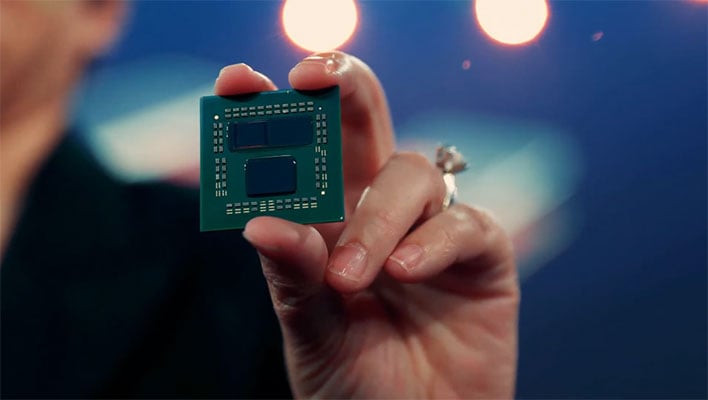AMD RDNA 2-Powered Zen 3+ Ryzen 6000 CPUs Reportedly Are In Mass Production

The ever-reliable Twitter leaker Greymon55 recently broke the news that AMD's Rembrandt chips have already entered mass production, which bodes well for the company's next family of processors. According to previous reports, these Rembrandt (Zen 3+) processors will fall under the Ryzen 6000 family and replace AMD's Ryzen 5000 "Cezanne" APUs used in laptops and desktops.

While sharing the basic Zen 3 architecture, Rembrandt will offer a few notable advantages. For starters, Zen 3+ is built on an enhanced 6nm process node instead of 7nm. This process node shift should lead to an uplift in efficiency compared to Zen 3 processors. In addition, Rembrandt will be the first APU design to ditch the legacy Vega architecture in favor of RDNA 2 GPU architecture for a boost in performance-per-watt compared to current-generation solutions.
VideoCardz alleges that these new Rembrandt chips could land as early as CES 2022, which will be held in person this coming January. Around the same time that Rembrandt is making its debut, we could be in for some high-performance variants of existing Zen 3 processors for the desktop market. Earlier this year, AMD first told us about its 3D V-Cache technology, which integrates into the existing Ryzen 5000 product family. The company's prototype Ryzen 9 5900X with 3D V-Cache delivered a 15 percent uplift in gaming performance on average compared to its "stock" counterpart.

AMD CEO Lisa Su promised during her Computex 2021 keynote that, "We've actually made great progress on the overall development of this technology. We'll be ready to start production on our highest-end products with 3D chiplets by the end of this year."
Looking further out, the true successor for Zen 3 in the consumer desktop space is Zen 4, which will likely adopt Ryzen 7000 branding. Recent rumors suggest that all Zen 4 processors will have RDNA 2 GPUs onboard (although some may have the GPU disabled), closely aligning AMD with Intel's CPU strategy. In addition, Zen 4 will adopt the 5nm process node and DDR5 memory support, although AMD is reportedly holding the line with PCIe 4.0 instead of embracing PCIe 5.0 like Alder Lake.
It's rumored that Zen 4 will provide another 20 percent IPC uplift over Zen 3, which should make for some monster performance when the processors arrive on the retail market.

